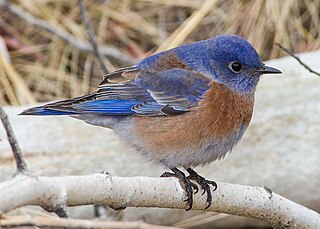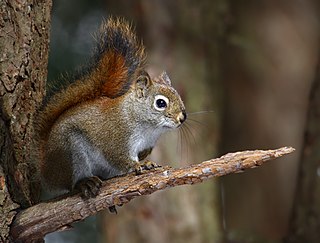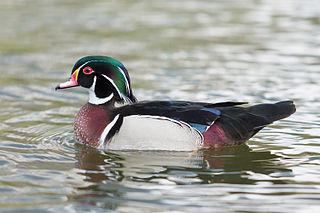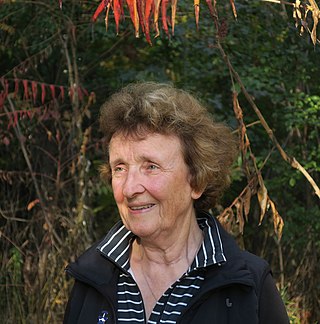Related Research Articles

Sexual dimorphism is the condition where sexes of the same species exhibit different morphological characteristics, particularly characteristics not directly involved in reproduction. The condition occurs in most animals and some plants. Differences may include secondary sex characteristics, size, weight, color, markings, or behavioral or cognitive traits. Male–male reproductive competition has evolved a diverse array of sexually dimorphic traits. Aggressive utility traits such as “battle” teeth and blunt heads reinforced as battering rams are used as weapons in aggressive interactions between rivals. Passive displays such as ornamental feathering or song-calling have also evolved mainly through sexual selection. These differences may be subtle or exaggerated and may be subjected to sexual selection and natural selection. The opposite of dimorphism is monomorphism, when both biological sexes are phenotypically indistinguishable from each other.

The tree swallow is a migratory bird of the family Hirundinidae. Found in the Americas, the tree swallow was first described in 1807 by French ornithologist Louis Vieillot as Hirundo bicolor. It has since been moved to its current genus, Tachycineta, within which its phylogenetic placement is debated. The tree swallow has glossy blue-green upperparts, with the exception of the blackish wings and tail, and white underparts. The bill is black, the eyes dark brown, and the legs and feet pale brown. The female is generally duller than the male, and the first-year female has mostly brown upperparts, with some blue feathers. Juveniles have brown upperparts, and a grey-brown-washed breast. The tree swallow breeds in the US and Canada. It winters along southern US coasts south, along the Gulf Coast, to Panama and the northwestern coast of South America, and in the West Indies.

The western bluebird is a small North American thrush.

The northern flicker or common flicker is a medium-sized bird of the woodpecker family. It is native to most of North America, parts of Central America, Cuba, and the Cayman Islands, and is one of the few woodpecker species that migrate. Over 100 common names for the northern flicker are known, including yellowhammer, clape, gaffer woodpecker, harry-wicket, heigh-ho, wake-up, walk-up, wick-up, yarrup, and gawker bird. Many of these names derive from attempts to imitate some of its calls. It is the state bird of Alabama

Alloparenting is a term used to classify any form of parental care provided by an individual towards young that are not its own direct offspring. These are often referred to as "non-descendant" young, even though grandchildren can be among them. Among humans, alloparenting is often performed by a child's grandparents and older siblings. Individuals providing this care are referred to using the neutral term of alloparent.

The American red squirrel is one of three species of tree squirrels currently classified in the genus Tamiasciurus, known as the pine squirrels. The American red squirrel is variously known as the pine squirrel, North American red squirrel and chickaree. It is also referred to as Hudson's Bay squirrel, as in John James Audubon's work The Viviparous Quadrupeds of North America. The squirrel is a small, 200–250 g (7.1–8.8 oz), diurnal mammal that defends a year-round exclusive territory. It feeds primarily on the seeds of conifer cones, and is widely distributed across North America wherever conifers are common, except on the Pacific coast of the United States, where its cousin, the Douglas squirrel, is found instead.

The turquoise-browed motmot is a colourful, medium-sized bird of the motmot family, Momotidae. It inhabits Central America from south-east Mexico, to Costa Rica, where it is common and not considered threatened. It lives in fairly open habitats such as forest edge, gallery forest and scrubland. It is more conspicuous than other motmots, often perching in the open on wires and fences. From these perches it scans for prey, such as insects and small reptiles. White eggs (3–6) are laid in a long tunnel nest in an earth bank or sometimes in a quarry or fresh-water well. Its name originates from the turquoise color of its brow. It is the national bird of both El Salvador and Nicaragua, where it is known as torogoz and guardabarranco respectively.

Aegolius is a genus of small true owls. The genus name is from Latin, aegolius, is a type of screech owl that was thought to be a bird of ill omen.
In behavioral ecology, adaptive behavior is any behavior that contributes directly or indirectly to an individual's reproductive success, and is thus subject to the forces of natural selection. Examples include favoring kin in altruistic behaviors, sexual selection of the most fit mate, and defending a territory or harem from rivals.
Bateman's principle, in evolutionary biology, is that in most species, variability in reproductive success is greater in males than in females. It was first proposed by Angus John Bateman (1919–1996), an English geneticist. Bateman suggested that, since males are capable of producing millions of sperm cells with little effort, while females invest much higher levels of energy in order to nurture a relatively small number of eggs, the female plays a significantly larger role in their offspring's reproductive success. Bateman's paradigm thus views females as the limiting factor of parental investment, over which males will compete in order to copulate successfully.

Conservation behavior is the interdisciplinary field about how animal behavior can assist in the conservation of biodiversity. It encompasses proximate and ultimate causes of behavior and incorporates disciplines including genetics, physiology, behavioral ecology, and evolution.
Rosemary Brigitte Woodroffe is a British ecologist and academic.

André Desrochers is a Quebec scientist with expertise in ornithology and ecology.

Kathy Martin is a global authority on arctic and alpine grouse and ptarmigan, and on tree cavity-nesting vertebrates. She is a professor in the Faculty of Forestry at the University of British Columbia and a senior research scientist with Environment and Climate Change Canada.
Rohini Balakrishnan is an Indian bioacoustics expert. She is a senior Professor and Chair of the Centre for Ecological Sciences at the Indian Institute of Science (IISc), Bengaluru. Her research focuses on animal behavior through the lens of animal communication and bioacoustics.
Christine M. Drea is a researcher and professor of biology and ecology with a specialty in animal social behavior and sexual differentiation at Duke University, both primarily on hyenas and primates. Drea's work is focused on female dominant species and the hormonal activity, reproductive development, and social interactions of these animals. She is currently the Earl D. McLean Professor of Evolutionary Anthropology within the Trinity College of Arts & Sciences and the director of graduate studies for the Duke University Ecology program.

Karen B. Strier is a primatologist. She is a Vilas Research Professor and Irven DeVore professor of Anthropology at the University of Wisconsin–Madison, and co-editor of Annual Review of Anthropology. The main subject of her research is the Northern Muriqui, a type of spider monkey found in Brazil.
Dr. Elizabeth Derryberry is an associate professor specializing in ornithology, in the Department of Ecology and Environmental Biology in the College of Arts and Sciences at the University of Tennessee.
Susan Denise Healy FRSE professor of biology at the University of St. Andrews, specialist in cognitive evolution and behavioural studies of birds and understanding the neurological basis of this. She was elected as a Fellow of the Royal Society of Edinburgh in 2021.
Julia Parrish is an ecologist and conservation biologist at the University of Washington known for her research on seabirds and for her leadership in citizen science. She is an elected fellow of the American Association for the Advancement of Science.
References
- 1 2 3 MacPherson, Colleen (May 10, 2012). "Wiebe awarded Houston professorship". University of Saskatchewan. Retrieved 22 August 2021.
- 1 2 Grainger, John (Aug 10, 2021). "USask research is for the birds". Green and White. Retrieved 22 August 2021.
- ↑ "Dr. Karen Wiebe". University of Saskatchewan.
- ↑ Mikusiński, Grzegorz; Roberge, Jean-Michel; Fuller, Robert J. (2018). Ecology and conservation of forest birds. Cambridge, United Kingdom: Cambridge University Press. p. 106. ISBN 9781107420724.
- ↑ "Temperature and size of cavity examined as factors in successfully raising young". Bluebird: Journal of the North American Bluebird Society. 25 (2): 12–13. 2003.
- ↑ Gow, Elizabeth A.; Wiebe, Karen L. (December 2014). "Males migrate farther than females in a differential migrant: an examination of the fasting endurance hypothesis". Royal Society Open Science. 1 (4): 140346. doi:10.1098/rsos.140346. PMC 4448777 . PMID 26064574 . Retrieved 22 August 2021.
- ↑ Davidson, Pete; Drever, Mark; Martin, Kathy; Norris, Andrea; Wiebe, Karen (2009). "Keystone Carpenters: Secrets of our Forest Engineers" (PDF). BirdWatchCanada (49). Retrieved 22 August 2021.